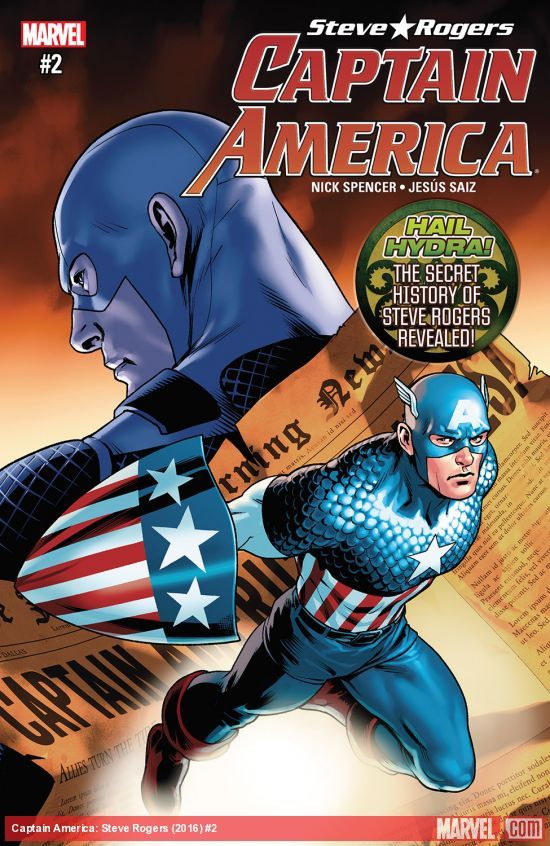In the "Attack on Pleasant Hill" crossover, a sentient Cosmic Cube restored Steve Rogers to his youthful form and took it upon itself to "fix" a whole lot more -- and so Nick Spencer and Jesus Saiz follow the "Hail Hydra" cliffhanger from the previous issue by delving into the recent past with "Captain America: Steve Rogers" #2, which delivers the story behind the events of the first chapter.
It's not exactly a linear explanation, however, as the exposition is directed by a current-time off-panel narrator who explains to Captain America how the Cosmic Cube was used to alter reality and produce the current circumstances. The narrator is Cap's old nemesis, the Red Skull -- a not-so-surprising reveal that Spencer places early in the issue and uses with great effect to create an efficient one-sided tone throughout. (Once you know this, try reading it without hearing Hugo Weaving's voice as the Red Skull. Good luck with that.) Unfortunately, this flashback issue also has flashbacks, and sometimes it's difficult to maintain the timeline of events as the narrative progresses.
"Captain America: Steve Rogers" #2 is an improvement over the first issue that features some other promising story moments that assure readers Spencer and the Red Skull have solid long-term plans. There is no downside to setting up a Red Skull vs. Captain America confrontation, and that is sure to come in future issues. In the meantime, Spencer keeps the Red Skull in character complete with amusing homicidal hot-headedness when Kobik -- the Cube in its new form as a young girl -- drops in on his headquarters, and Spencer also has the Skull hatch a long-range plan to corrupt the impressionable Kobik into believing that Hydra represents the good guys. The short scene where the Red Skull reads the Cube a bedtime story is disturbing and fabulous.
Problems arise in the issue when the story butts heads with the method of storytelling. There are rocky transitions in Spencer's script that Saiz cannot smooth over. The dialogue is improved over the first issue, but lines like "I am bored" may not win over fans. Despite his expressive color shading, there are inconsistencies in Saiz's art (Director Hill's face and most of Erik Selvig's panels) that distract from the story. His page construction and panel arrangements are the best in the Red Skull scenes and hurried in the S.H.I.E.L.D. scenes. Saiz's Red Skull panels have a magnetism I wish pervaded the remainder of the book.
Captain America fans wanted a young Steve Rogers and now we have him, and issue #2 is definitely an improvement over the first. The corruption of Captain America is a solid story idea -- and I love that the arc is going to include a host of favorite Cap co-stars -- but the creators aren't functioning as a well-oiled machine quite yet.

